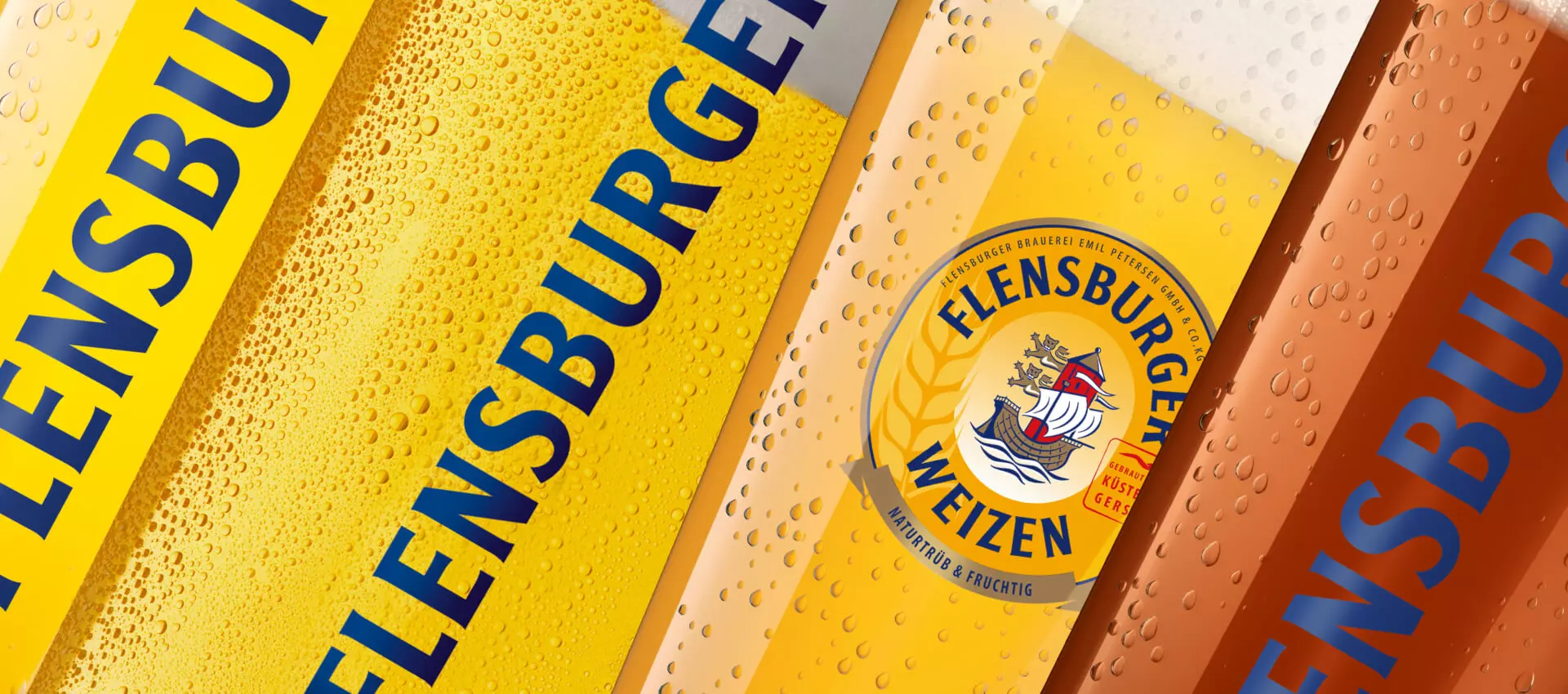
The EBC And The Beer.
Abstract
EBC in beer? Don't worry, EBC is not a secret ingredient in beer, but a color index for beer color. What does it say? Let's find out in black and white.
The Beer Color And The EBC Of The Beer.
Beer is known to come in the most beautiful colors: Some are golden yellow like our Flensburger Pilsener, slightly lighter like our Flensburger Edles Helles, sometimes much darker like our Flensburger Dunkel, reddish blond like our Flensburger Winterbock - and all of them can be perceived in varying degrees of color intensity.
This brings us to the subject of EBC and beer: light-colored beers generally have lower EBC values, which indicates a gentle malting and a refreshing taste of the beer. Darker beers have higher EBC values, indicating more intense roasting of the malts and more complex flavors.
What Is EBC In Beer?
Simply put, the EBC as a unit helps to determine the exact color of beer. Developed by the European Brewery Convention, the EBC colour index is a standardized system for measuring the colour strength of beer.
This enables a uniform evaluation and comparability of beer color. The EBC value is a unit that indicates how dark or light a beer is, with lower values indicating lighter beers and higher values indicating darker beers.
How Is The EBC Value Of The Beer Color Calculated?
The EBC value is measured in a laboratory by analyzing a beer sample with a spectrophotometer. This device measures the amount of light at a specific wavelength (430 nm) that is absorbed by the sample. The measured values are then compared with an EBC color chart to determine the exact EBC value. This method provides a precise and objective assessment of beer color and therefore plays an important role in beer quality control.
Too complicated? A simple way to determine the EBC value is this beer color calculator for hobby brewers:
Dark Beers, Light Beers - Where Does The Beer Color Come From?
Good if you can determine an EBC value to ensure consistent beer quality, among other things. But where does the different beer color actually come from? This naturally occurs during the brewing process and due to the raw materials used.
Malt plays the most important role in the color of the beer. At the Flensburg brewery, malt is produced from coastal barley, among other things. During mashing, this raw material is responsible for the taste, the carbon dioxide and the alcohol content in the beer, as well as the color of the beer.
The amount of crushed brewing malt added during brewing has a major influence on the lightness or darkness of the beer color. Particularly in dark and highly alcoholic beers such as bock and doppelbock beers, the high malt content is not only particularly intense to taste, but can also be seen in the dark coloration.

What Role Do Malt Color And Original Wort Content Play In The EBC Value?
The beer color is the result of the quantity and EBC values of the malts contained in the batch. Maltsters usually specify the color of a malt type in units of EBC, for example 2.5-4.5 EBC for Pilsner malt.
As a rule of thumb, the lower the EBC value, the lighter the malt and the higher, the darker. The color spectrum of malt colors ranges from 2 EBC (very light) to 1200 EBC or even higher - which is similar in color to charcoal.
When determining the color of the beer by EBC, the original wort also comes into play: the higher the original wort content, the more intense or darker the color, as the wort is colored during the boiling process.




